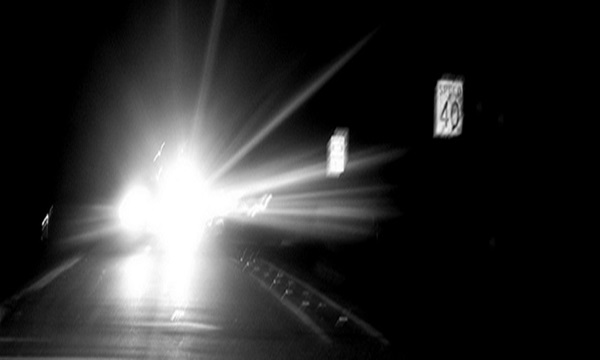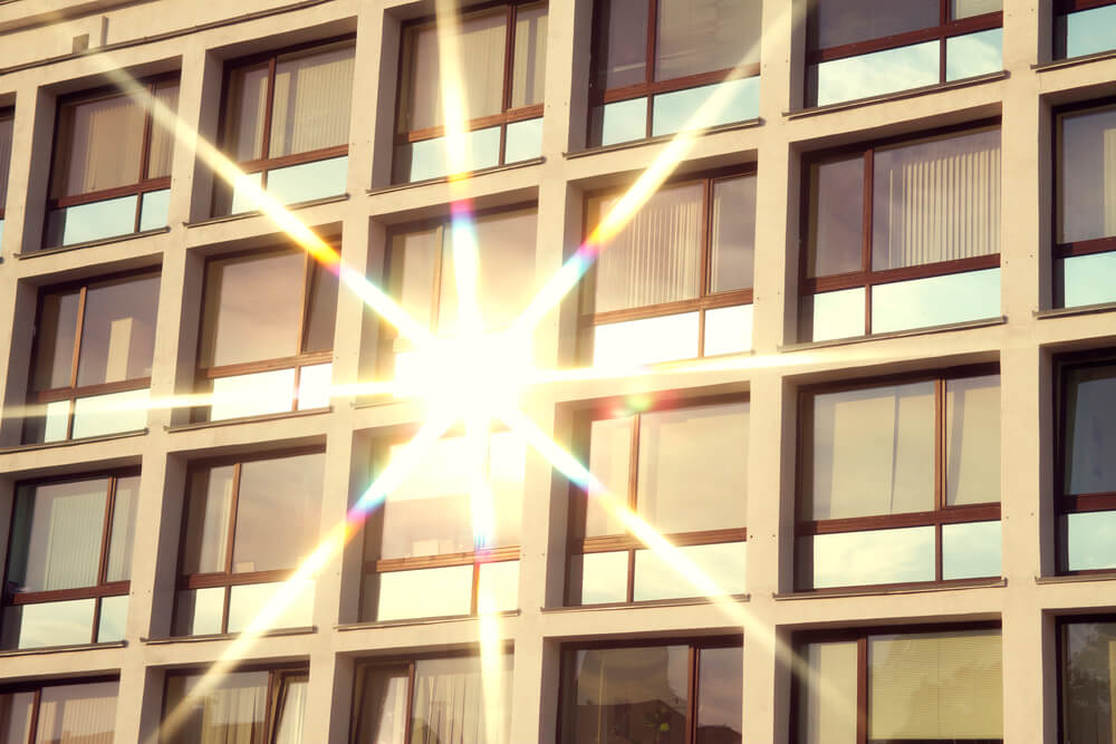Light is crucial for vision. It bounces off objects and enters your eyes, which allows you to see. But sometimes, it’s the source of vision problems, like glare. The issue of glare is something most people deal with on a daily basis. From driving down a rainy highway late at night to trying to watch your favorite baseball team without squinting – the effects of glare can become an unpleasant and sometimes dangerous experience. On top of that, if you’re an eyeglass wearer the effects of glare can be even worse as they often become smudged or scratched.
What is glare?
Glare is a visual sensation caused by excessive and uncontrolled brightness. It can be disabling or simply uncomfortable. It is subjective, and sensitivity to glare can vary widely. Older people are usually more sensitive to glare due to the aging characteristics of the eye. Disability glare is the reduction in visibility caused by intense light sources in the field of view, while discomfort glare is the sensation of annoyance or even pain induced by overly bright sources。
At present, the Illuminating Engineering Society (IES) defines glare as one of two conditions:
Too much light
Excessive contrast, meaning the range of luminance in the field of view is too great
Whether designing lighting or daylighting, the principal objective is to ensure that there is the right amount of light with appropriate limits to glare. Because glare is physiological and can cause intense physical response, there are occasions when glare is wanted, such as scanning a concert audience with a spotlight to heighten the excitement. In architecture, glare is desirable when a designer wants to cause extreme contrast that exhilarates the visual experience. But for most architectural lighting and daylighting, effective methods of glare control and prevention are essential to good lighting practices. To better understand glare, it is important to consider that the human eye adapts to the average luminance of a visual scene. The eye’s range is amazing, perceiving scenes with light levels of less than .01 lux (which equates to starlight) to more than 100,000 lux (the equivalent of a sunny day). But the eye can only adapt to a part of this range at one time, and it takes a few moments for the eye to adapt, such as when you enter a movie theater on a sunny day. When you first enter the theater, you are temporarily blinded because your eyes are adapted to daylight; but when you leave the theater, even the reflected outdoor daylight is temporarily glaring. In other words, your susceptibility to glare is a direct function of adaptation: The darker the scene to which you are adapted, the more likely you are to experience glare from a light source.
In practice, glare is almost always a situation where a source of unshielded light is at least 1,000 times brighter than the average visual field. For instance, since the night sky is dark, almost all outdoor light sources, such as a street luminaire or automobile headlight, cause glare. So, it’s important to choose an anti-glare light.
Types of glare
Discomfort glare
Discomfort glare from a light source or luminaire, where brightness is greater than the eye can adapt to, makes a task uncomfortable to perform. The degree of discomfort depends on several factors; the brightness and the size of the glare source, the position of the glare source in relation to the line of sight, and the background luminance against which the glare source is viewed.
Disability glare
Disability glare is caused by a reduction of contrast which leads to a decrease in visibility. This type of glare describes the situation when the ability to perform is adversely affected i.e. driving when the sun is low in the sky or towards a vehicle using full beam headlights. Traditionally, disability glare would be associated with incidental issues such as those described and not associated with modern lighting design practice or product technology.
Measuring glare: The UGR value
UGR(Unified Glare Rating) is proposed by Sorensen in 1987 and adopted by the International Commission on Illumination (CIE) in 1995 before being recommended for international application. Uncomfortable glare in industrial lighting and common rooms or places in public buildings should be evaluated using the unified glare value (UGR). The lower the value, the less discomfort the user will experience from the lighting.
The UGR adds up the contributions of all glare sources in the visual field, taking into account source luminance, source size, source position and background luminance. UGR value may also vary depending on the size of the room, the reflection factors of the ceiling, walls, and floor, and the position and viewing direction of the observer in the room.
For lamps with a large luminous surface such as panel lights, linear lights should be implemented with plates that can suppress large-angle light.
For outdoor lamps, such as street lamps, GR limits and TI limits should be used for evaluation.
How to reducing glare
Using indirect lighting: it throws more light upward than downward, diffusing the light and reducing glare on computer screens
Use adjustable lighting: make sure light is adjustable for dimness or brightness to suit the situation
Relocating the light source: relocating the task or changing its orientation until the glare is removed
Changing the surface reflectance of the task: Use blinds or shades on windows to control the amount or transmittance angle of sunlight entering the space
Using Filter & diffuse: using filtered light instead of direct light, which causes the most glare. Diffuse light with lamp shades or globes, and use adjustable curtains or blinds on windows.
In conclusion, visual comfort is crucial to our well-being. In offices, sports venue and other environments it’s even more important, as it makes workers, sportsmen and audience more comfortable. Glare, a complex phenomenon that comes in both direct and indirect forms, is a chief cause of visual discomfort – and even visual disability. With the right lighting, however, lighting professionals can mitigate or even eliminate it. Tachyonlight’s lights has their own professional anti-glare system which can greatly reduce the effects of glare. Welcome to contact us.









